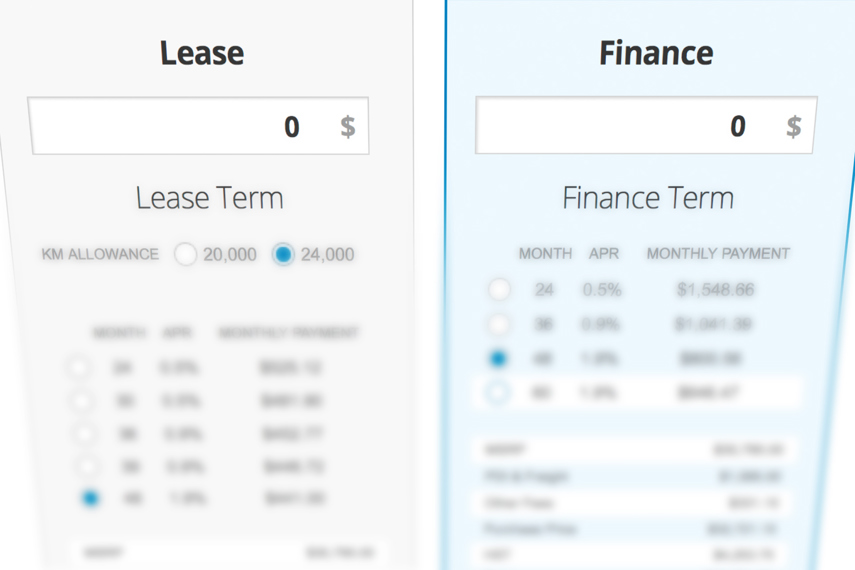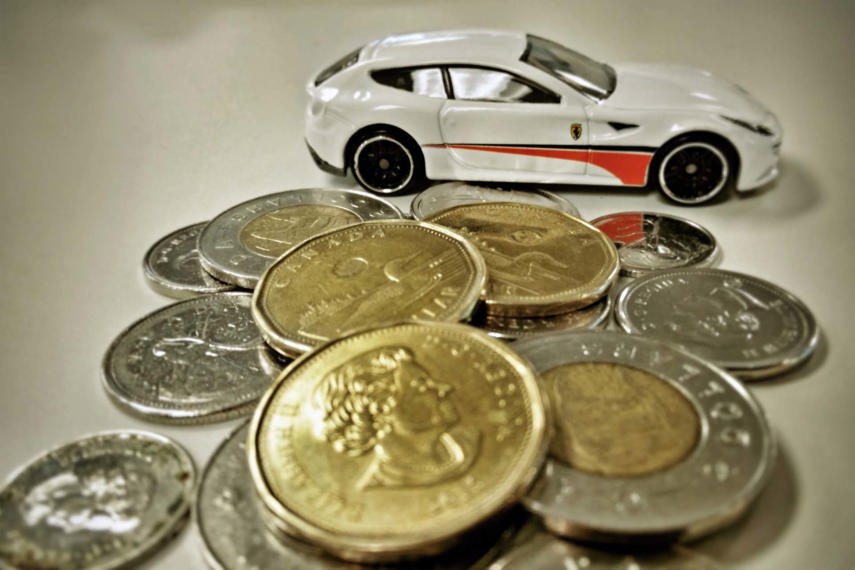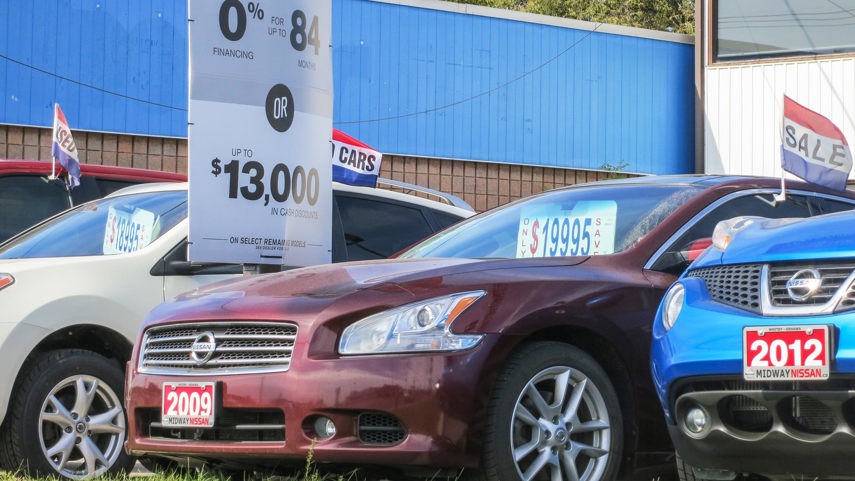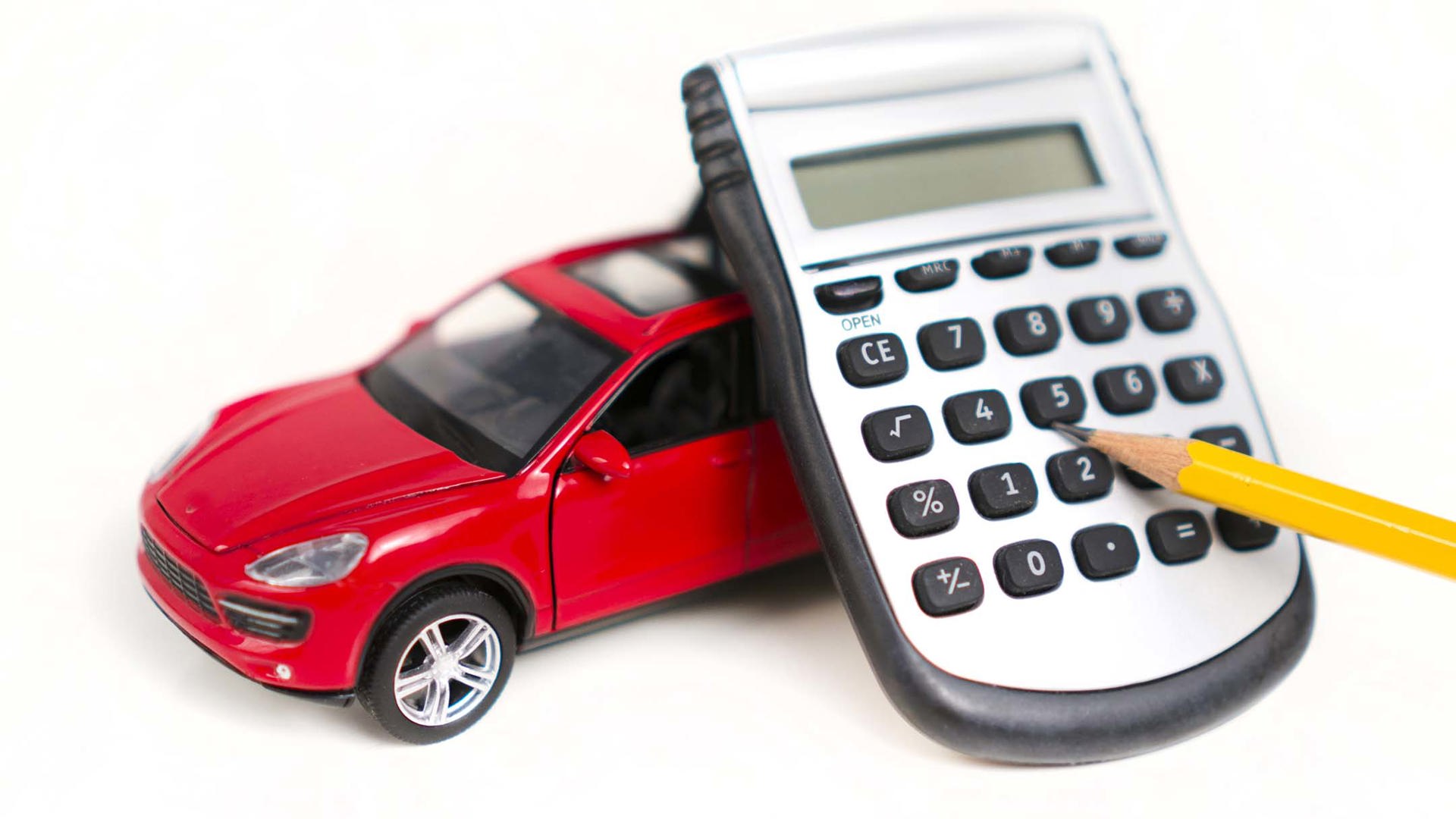You’ve finally decided on the vehicle you want. Now you have one more decision to make: Are you going to go for financing or leasing?
There are pros and cons to each, and you should know what to expect. We can’t tell you which one is right for you, but we have some tips to help you make the right decision.
Borrowing to Buy
Financing can be a loan through your own bank or financial institution, or arranged by the dealership, either through the banks it deals with or the automaker’s financing division. The dealership makes some money on the transaction, but don’t let that keep you from looking into it. You may still get a better rate than some banks, especially if the automaker is offering incentives like zero-per-cent financing.
Our tip: before you start car shopping, go to your bank and apply for loan pre-approval. You’ll know your spending limit, interest rate, and what your payments will be so you can budget for it. It’ll also give you bargaining power, and you don’t have to use that loan in the end if the dealer makes you a better offer.

What Leasing’s All About
When you lease, you’re basically renting the vehicle and paying monthly for a set period, usually between two to four years. The dealership sets up the arrangement with a leasing company.
In simplest terms, the leasing company determines the car’s residual value – what it expects the vehicle to be worth at the end of the lease. That is subtracted from its purchase price. In effect, it’s the vehicle’s depreciation over the length of the lease. Other costs are factored in, including fees and taxes, interest, and any down payment. The total is divided by the number of lease months to determine the monthly payment.
At lease end, you can buy out the car for its market value, or simply hand back the keys and walk away. However, you might still be on the hook for mileage or repair charges, and we’ll cover those below.
Vehicle Subscriptions
Depending on where you are, you might have a third option with a vehicle subscription. They’re not as popular as they once were, and most automakers that offered them have dropped them. There’s still Care By Volvo and Porsche Drive, and a few private companies that offer subscriptions as well. The benefit of a car subscription is rolling most of the costs into one simple monthly payment.
For a monthly fee, and depending on the subscription, you may get a vehicle with maintenance, winter tires and storage, insurance, and the ability to switch to other cars. Subscriptions can be much shorter than leases, but can be far more expensive in the long run, and most are only available in limited areas.

The Benefits of Financing
When you buy and finance a vehicle, you own it and some people simply prefer driving something that belongs to them. You may be able to take advantage of incentives from the automaker or the dealer, such as cash rebates or zero-per-cent financing, to bring down the price.
There are no restrictions on what you do with the vehicle, while a lease may limit your mileage. On most loans, you can make lump-sum payments to pay it off sooner if you have extra cash. If your lifestyle changes – perhaps a growing family means trading your two-seater for a minivan – you’re not locked in to that vehicle for the next few years, and can arrange to sell or trade it. You may also be able to finance a used vehicle for extra savings, while it’s rare to find a lease for a pre-owned vehicle.
The Burdens of Buying
A vehicle is a depreciating asset, and you’ll never get back what you paid for it. Once its warranty coverage runs out, you have to pay for repairs and maintenance.
To make the smallest payments possible, some people opt for very long loan periods – as long as 84 or even 96 months. Do the math: That’s seven to eight years!
Here’s our tip: Don’t do it. Go for a lower-priced vehicle to reduce the number of years on your loan. Every car loan starts out “upside down,” meaning that you owe more than the car is worth, but these extra-long loans keep you under that much longer. If the car gets written off in a crash later in the loan when it’s not worth as much, your insurance payout might not cover it. You’ll still be paying off a car you no longer own.

What’s Good About Leasing?
Your monthly lease payments will likely be lower than if you buy and finance. If you want a premium model, the lease payments might be close to purchase payments on a lower-level vehicle. If you use your car for business, there may be tax advantages to leasing.
If you like having a new car or want the latest high-tech features, you can hand back your car at the end of the lease period and move into a newer model. Most leases last the length of the warranty period, so you don’t have to worry about repair bills. At the end of the lease, it’s possible that the residual price set at the beginning is lower than what comparable models are bringing, so you’ll get a deal if you buy it. If it’s higher than other cars on the lot, you simply give yours back.
The Tough Stuff About Leasing
Vehicles coming off leases go to used-car showrooms, and they have to be saleable. Most leases have a mileage limit, and if you return the car over the limit, you’ll be charged a fee per kilometre. The vehicle will be inspected when you hand it back, and you’ll have to pay up for such things as dings and dents, interior damage or stains, worn tires, or anything else that could affect its resale. If you haven’t been really careful with your car, you could end up paying a lot when you hand it back.
If your life circumstances change and you can’t afford or don’t want the lease anymore, you’re still committed to it. It can be difficult and expensive to break your lease, or find someone to take it over, if your leasing company allows it.

Some Extra Tips…
- If you’re leasing and know you’re going to drive a lot, consider prepaying for extra mileage. It’ll likely be cheaper than paying the penalty at the end.
- Make sure all lease fees are in your contract before you sign it, including any charges if you buy the vehicle at the end. Get the general manager to sign it, not just the salesperson.
- Take photos of your lease vehicle before returning it, so you don’t get dinged for damage that wasn’t there when you brought it back.
- If you’re buying your vehicle, consider getting an off-lease car. It’ll be in good shape, and somebody else has already paid the first round of depreciation on it.

